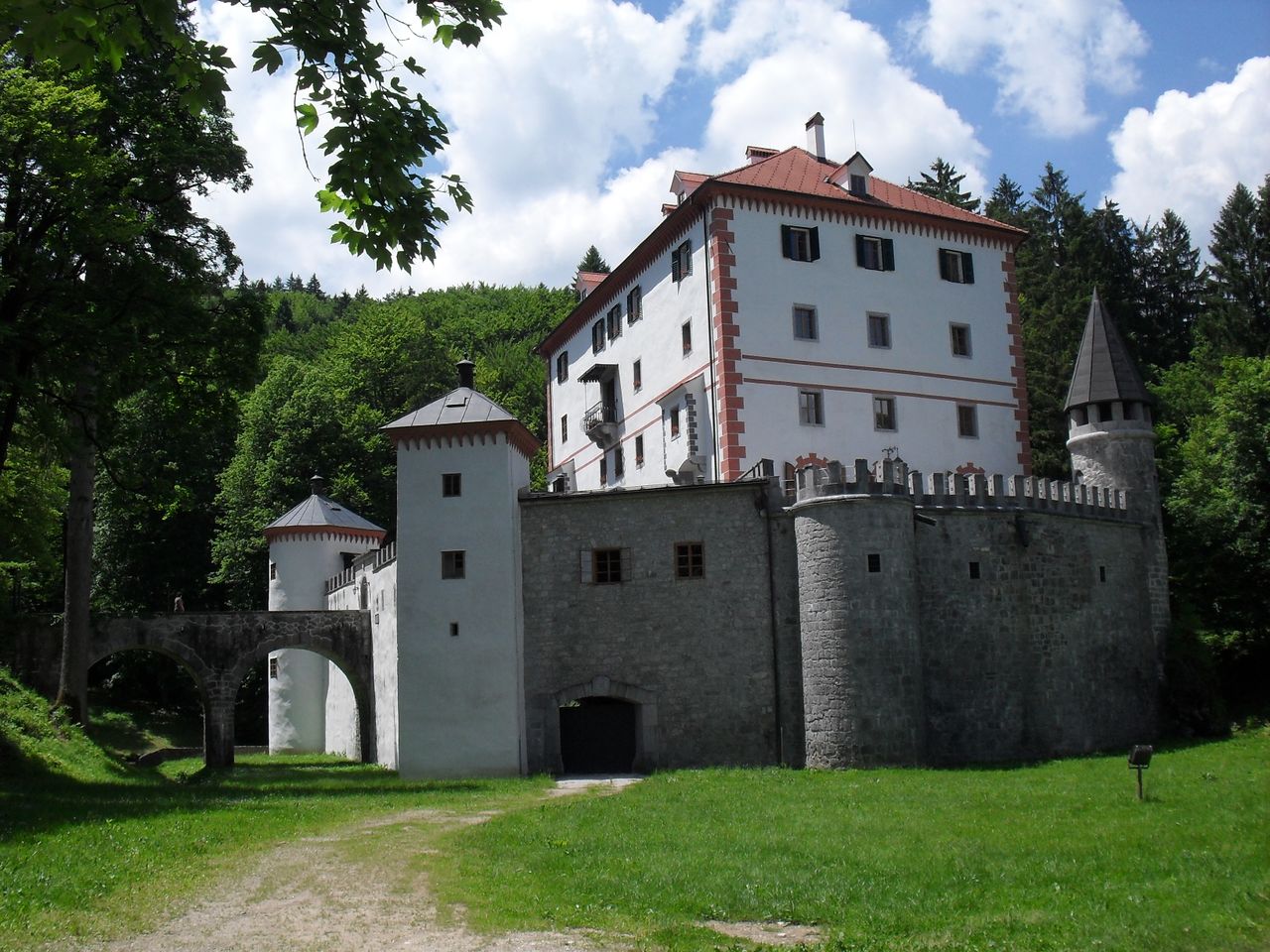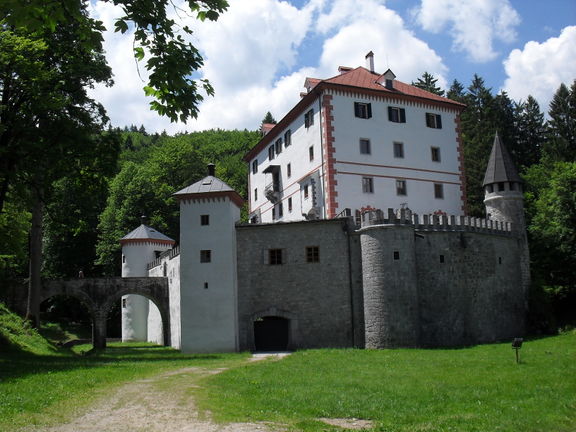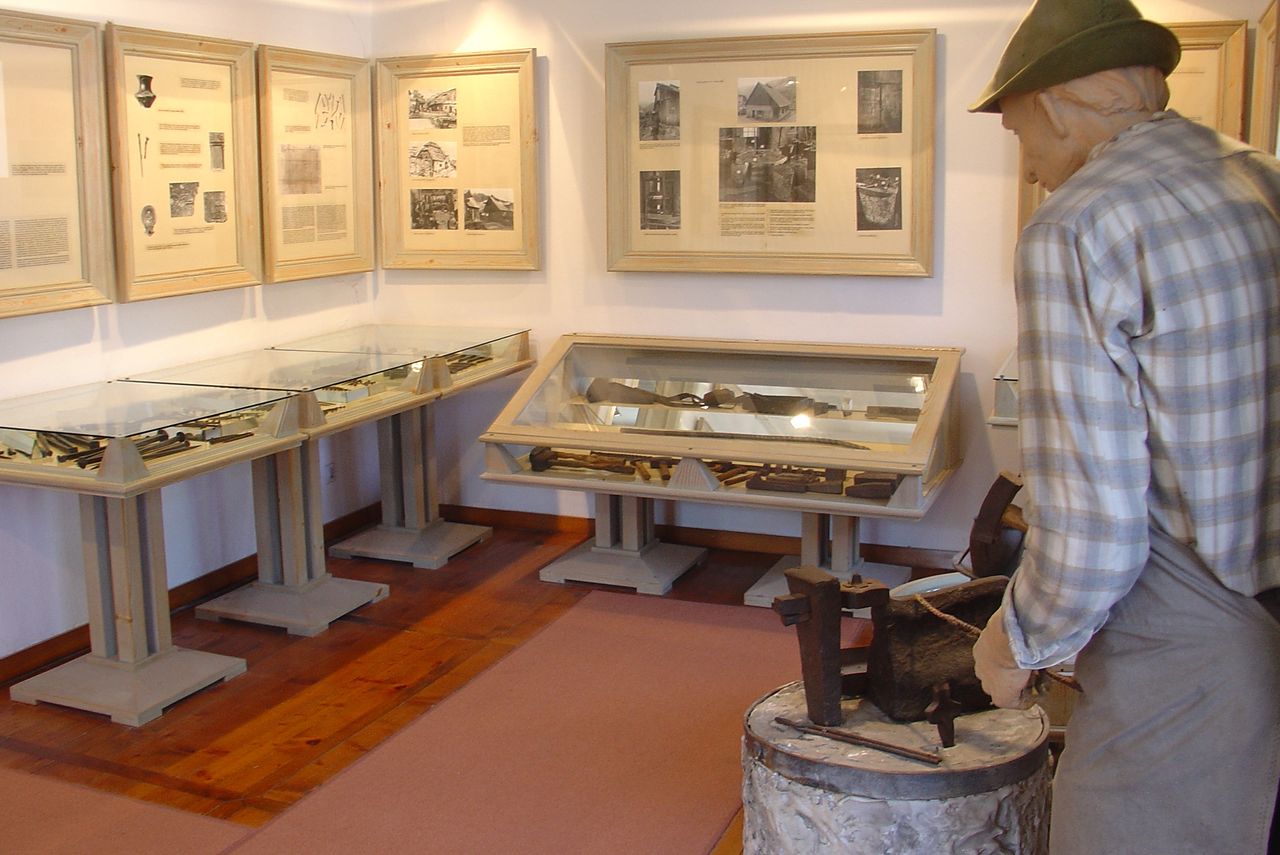 Snežnik Castle, being the only Slovene Castle with genuine furnished interiors, came under the administration of the National Museum of Slovenia after its restoration in 2008.
Snežnik Castle, being the only Slovene Castle with genuine furnished interiors, came under the administration of the National Museum of Slovenia after its restoration in 2008.
The earliest record of Snežnik Castle dates from 1269 when it was owned by the patriarchs of Aquileia. The castle lies on a strategic site, on the edge of the Lož Valley under the Snežnik mountains surrounded by a beautiful park and vast forests with diverse and rich flora and fauna including big game ranging from bears, boars, wolves and lynxes, to wild fowl and deer, and was always favourite hunting residence. Throughout the centuries the castle has changed owners many times, but in 1853 the castle and associated forests of Snežnik were bought by German Prince Otto Viktor Schönburg-Waldenburg, who gave it to his third son Georg. Thereafter it remained in the Schönburg-Waldenburg family until 1945. The last caretaker Leon Schauta saved Snežnik Castle from destruction after the Second World War by keeping good relations with the locals before and after the war. Restoration began in the 1960s and the castle opened to the public in 1970/71. In 1983 two additional exhibition rooms were opened. After a restoration completed in 2008, the romantic state-owned castle came under the administration of the National Museum of Slovenia and is the only Slovene Castle with genuine furnished interiors.
Since 2014 the Floating Castle Festival has embedded into the picturesque surroundings of the castle the late summer "folk-puppet-music-theatre site-specific event".
NOT ROBOT, WRITING DONE, INFOBOX DONE, PROOFREAD DONE, FERTIK, NOVERIFY, NODEPO, PHOTO, FEATURED, Article, NO LOGO, HAS MAP, Museums, Monuments and sites, Articles maintained by Ivan Pirnat, Castles, COVER

 A collection of nails in the blacksmith's museum Kropa Iron Forging Museum in Radovljica
A collection of nails in the blacksmith's museum Kropa Iron Forging Museum in Radovljica
Located in the narrow valley beneath the Jelovica plateau, the town of Kropa has preserved the appearance of an old iron-making settlement and since 1953 has been protected as important state cultural monument. The Kropa Iron Forging Museum was established in 1952 as the first technical museum in situ. It was founded on the endeavours of locals and experts, especially Franjo Baš who was at that time director of the Technical Museum of Slovenia.
The Iron Forging Museum is located in the old 18th-century forging house known as Klinar House (a very well preserved mansion by a forge owner) and is nowadays administered by Radovljica Municipality Museums. It covers the technical and historical development of iron-working from iron ore to nail.
NOT ROBOT, WRITING DONE, INFOBOX DONE, PROOFREAD DONE, FERTIK, NOVERIFY, NODEPO, PHOTO, FEATURED, Article, Articles maintained by Anže Zorman, HAS LOGO, Updated 2017, HAS MAP, Museums, Specialised museums, COVER, Industrial and technical heritage







